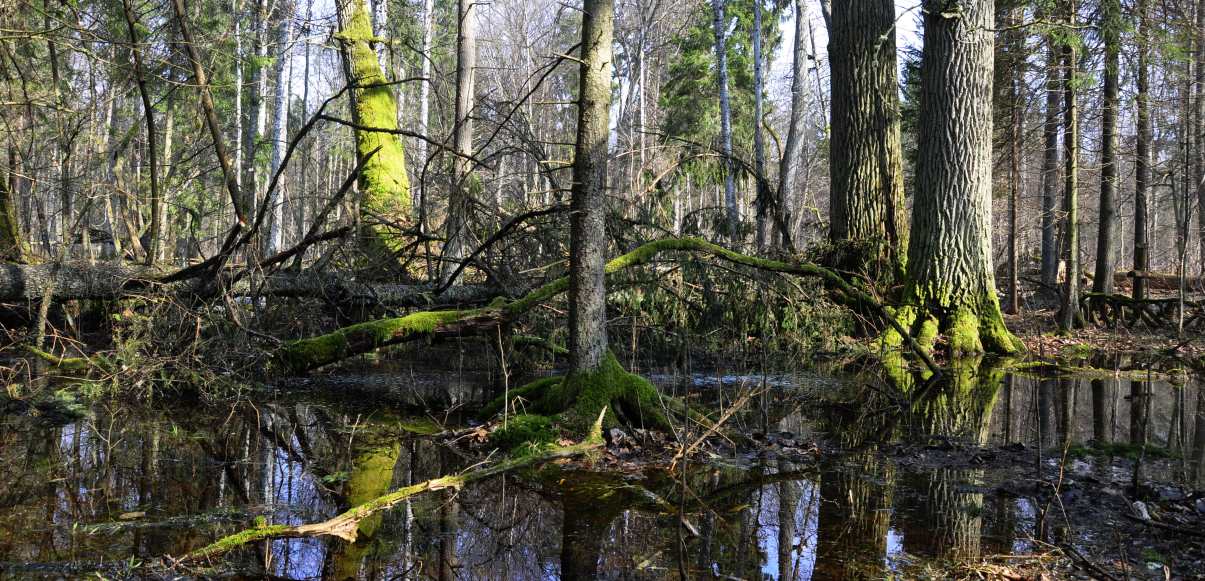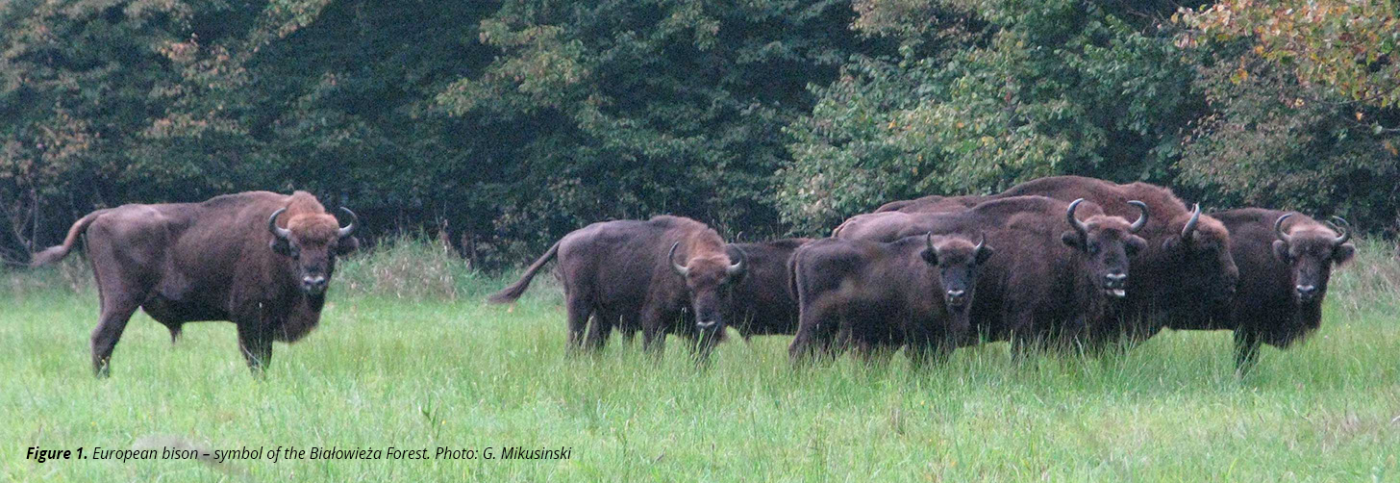![]()
Context
The Białowieża Forest (BF) is a trans-boundary area, located on the border between Poland and Belarus. It is considered the only remaining large area of near-natural lowland temperate forest in Europe with many rare species including re-introduced the European bison, a symbol of the BF (Figure 1). Presently, 16% of the Polish part of the BF (i.e. about 105 km2 out of a total of about 630 km2) is protected as a national park, while the rest is managed by the State Forest organisation. Since the beginning of 1990s there has been conflict in the BF regarding protection and management of its biodiversity. This has polarised into the contrasting perspectives and views held by two camps of stakeholders. While environmentalists and scientists, supported by the Government, believe that the management by the State Forest has been detrimental to the unique biodiversity of this area, and have advocated enlargement of the national park to cover the whole Polish part of BF, foresters and local people have been keen to sustain the less biodiversity-friendly State Forest regime and they oppose the enlargement of the national park.
Since 2001, the planned enlargement of the national park has been blocked by local communities, who according to new legislation, needed to give consent on the enlargement. The new legislation was a result of the Białowieża Forest conflict and the argumentation of foresters and local people influenced the decision making at the national level. After a long process of negotiations between local authorities and the representatives of the Government that failed to lead to consensus, in 2013 the Minister of the Environment made a decision to reduce the level of timber harvesting by two thirds. This decision was welcomed by the proponents of the park enlargement as it meant a considerable decrease in the detrimental impacts of forestry and improvement of the conditions for the forest’s biodiversity. However, the decision was contested by the local communities
Arguments
The main argument for park enlargement put forward by its proponents was related to the unique nature of the BF and its European importance for biodiversity conservation. They highlighted that forest management was detrimental for the special biodiversity of this area by interfering into natural dynamics of the forest and removing structures important for biodiversity, such as old large trees and dead wood (Figure 2). The opponents of park enlargement underlined that extending protection would mean increased costs for the local communities (e.g. limited access to forest resources such as firewood). In addition, they claimed that the management by the State Forest was necessary to maintain the natural values of the BF, because “the forest cannot manage itself”.

![]()
Framing
The lines of argument used by the various parties mirrored three wider standpoints: 1. ‘managerial’ – with foresters presented as stewards of the forest, actively managing it for sustainable outcomes, i.e. both for biodiversity and local livelihoods 2. ‘livelihood’ – underlining the needs of local people and the role of forest in fulfilling these needs; and 3. ‘primeval’ – framing the forest as something with intrinsic value important not only locally but also nationally and even internationally. The first two discourses appeal to a human-centred standpoint where the forest is viewed as something to be shaped by people and for people. Although the argumentation behind these two standpoints is not explicitly framed economically, the main focus is on the needs of the local communities. By contrast, the third standpoint underlines the intrinsic value of nature and human moral obligation to protect it. Appealing to moral obligation did not however, prove to be effective in the BF case, even if supported by scientific evidence showing the detrimental impacts of forestry on biodiversity of the forest. This was due the stronger focus of local communities on their livelihoods and their fears of economic costs that increased protection would lead to. However, this intrinsic value of nature standpoint gained new power when it was supported by the legal obligation for protecting biodiversity when Poland entered European Union in 2004 and was required to accept EU conservation policies.
Processes
The different actors stood firmly by their established views for over two decades. However, with time, they slightly adjusted their “messages” to be more easily accepted by their opponents. For example, the Government initially focused on the intrinsic value of the forest and its importance for biodiversity, and sought to strenghten their case by suggesting that increased tourism due to enlargement of the park would provide benefits to local communities that would balance the costs the them of protection.
Effectiveness
Lines of argument relating to wider standpoints that were strongly institutionalised (i.e. embedded into professional guidelines, organisational practices and legal system) proved to be the most effective.The concept of foresters as stewards of the forests and carers for its biodiversity, rooted in the long history of State Forestry and its positive image in the eyes of the Polish society, as well as the legal framework, legitimised arguments for continuing forest management. The local people’s arguments had societal support and became more effective when an Act of Parliament gave them the power to veto park enlargement. Arguments put forwards by the proponents of park enlargement were ineffective for decades until they drew support from the social and legal context.
Lesson learned
- Arguments focused on the intrinsic value of biodiversity are not effective alone, particularly where there are substantial social and economic concerns.
- Institutionalisation of wider standpoints and specific lines of argument helps to enable policy action.
- Different lines of argument have different weight depending on scale. Global or national level arguments need to be adapted to better address the local scale concerns.
Looking for more information on effective arguments for biodiversity?
For more BESAFE results, including separate briefs focusing on other case studies and various aspects of argumentation, see http://www.besafe.pensoft.net [ref BESAFE toolkit].
This brief is a result of research carried out under the BESAFE project. This brief was written by Malgorzata Blicharska at Swedish University of Agricultural Sciences. Further information is available at (website, report, publication…)
The BESAFE project is an interdisciplinary research project funded under the European Community’s Seventh Framework Programme, contract number: 282743.
http://www.besafe.pensoft.net/ | malgorzata.blicharska@slu.se
